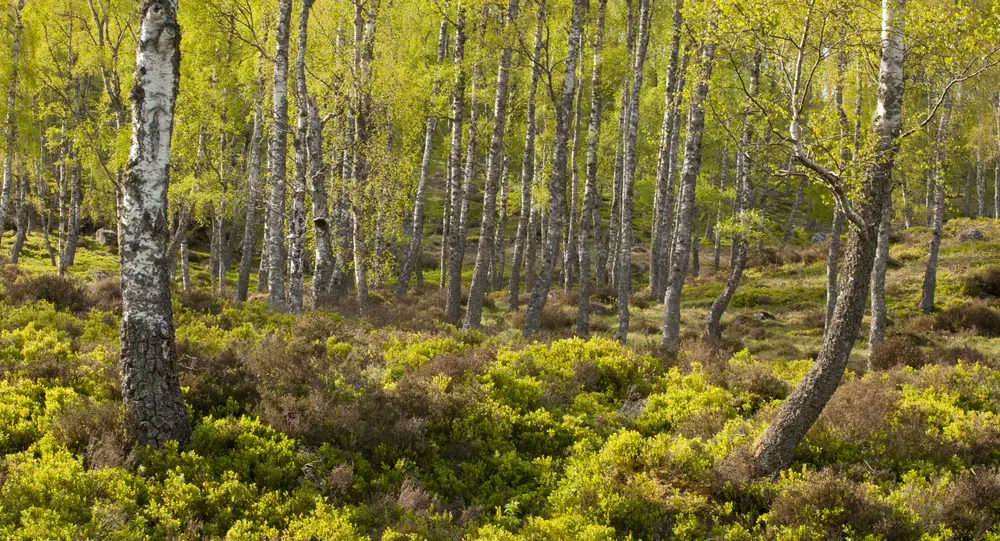What are we doing to protect and conserve nature?
We don’t just grow and fell trees. We also lead in conserving landscapes. For World Nature Conservation Day, we’re highlighting several projects that protect and enhance nature in Scotland.

Designated sites & species
These areas are known globally as important for science and nature. This includes Caledonian pine forests, Atlantic oak woods or even peat bogs. These sites are home to many unique and threatened animals. We work to conserve these areas to benefit nature.
The facts:
- We manage 428 designated sites
- Home to diverse species like goshawks and wildcats
- Include Sites of Scientific Interest
- Include Special Areas of Conservation
- 92.5% in favourable condition (compared to 80% average)*
*Site ratings by NatureScot. Figures correct as of 2017.
1ha equals 10,000 square metres. That’s a square with sides 100m long.
To put that in perspective, the football pitch at Wembley is 7,140 square metres. So 10 pitches are around the same as 7ha.
Ancient semi-natural woodland (ASNW)
This type of forest is extremely rich in life. It typically exists in pockets that have been largely undisturbed by humans over the last century. Forests like the Black Wood of Rannoch are prime examples where animals, birds, insects, flora and fauna are all thriving. A recent survey of ASNW on our land means we will soon begin restoring more of these unique areas.
The facts:
- Over 8,000 hectares of ASNW on our land
- That’s around 11,000 football pitches
- We will be restoring more of these areas over the next few years
Plantation on ancient woodland sites (PAWS)
In the past some areas of native woodland were felled and re-planted with conifers for timber production. The goal of the PAWS project is to return these forests back to native woodland. Our focus now is on making long lasting woods suitable for many species to live in.
The facts:
- 18,500 hectares of PAWS on our land
- That’s around 26,000 football fields
Natural reserves
These woodland habitats are areas that are managed very lightly. Our goals are to conserve the woods and make a home for more species to live in. They form a safe haven for many animals, allowing them to grow in numbers. Sometimes an increase in population is enough for animals to naturally spread into other areas.
The facts:
- 36,865 hectares on our land
- That’s over 51,500 football pitches
Riparian woodland restoration
This project aims to connect patches of native woodland together. By doing so, species within these areas can spread further and find new areas to populate. This project includes broadleaf planting by rivers and burns which benefits aquatic life. By improving water quality and temperature, trees in these positions help under-threat species like salmon.
The facts:
- 2,207 hectares transformed to riparian woods
- That’s over 3,000 football fields
- Visit Cairngorms Connect to see how we are helping to join up the Caledonian pine forest
Peatland restoration
Scotland is one of the richest countries in the world for peatlands. In addition to storing carbon emissions, they are home to a many threatened birds, insects and plants. Tree planting schemes from yester year meant some of these landscapes were badly damaged. We now work to restore these areas to fully functioning bogs which provide a home for animals like curlews and lapwings. This work also improves water quality in nearby areas.
The facts:
- Over 6,000 hectares of peatland has begun to be restored
- That’s 8,400 football pitches
- Our site at Gow Moss is showing signs of returning species just one year after restoration
Sand dune restoration
In two sites in northern Scotland we have worked to restore damaged sand dunes. Invasive trees and scrub have threatened some of the native species. We have since cleared unwanted vegetation to allow the dunes to return to their natural state, and to encourage original species to return.
The facts:
- 12.6 hectares of dunes restored
- That’s 17.5 football fields
Partner to protect
We look after forests and land. That’s why, when it comes to wildlife, we partner with many groups throughout Scotland to protect and conserve. Currently we are partnering to help species like:
- Capercaillie
- Golden eagles
- White-tailed eagles
- Goshawks
- Common scoters
- Beavers
- Wildcats
- Water voles
- Red squirrels
- Freshwater pearl mussels
- Pine hoverfly